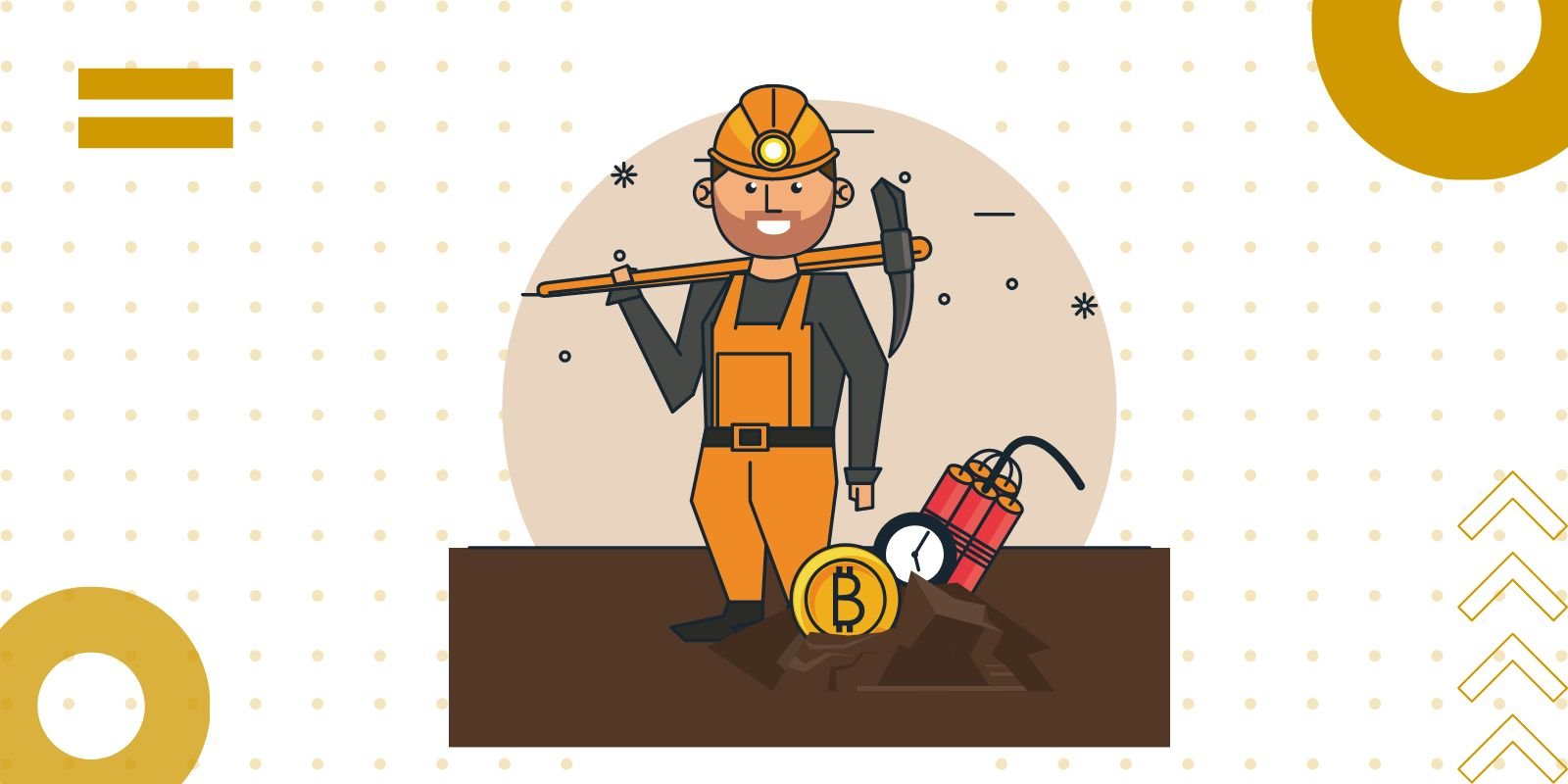You may have heard the term “proof-of-work” in the context of Bitcoin and other digital currencies, but what does it mean? Proof-of-work is a requirement that is put in place to ensure that miners are doing work in order to mine new blocks and receive rewards. The proof-of-work system was created as a way to prevent spam attacks on digital currency networks.
Miners are required to solve a difficult mathematical problem in order to create a new block and receive rewards. The problem becomes more difficult as more miners join the network, making it increasingly more difficult to monopolize the mining process.
In this article, we’ll take a closer look at what proof-of-work is and how it works.
What Is Proof-of-Work?
Proof-of-work is a way of verifying transactions on a blockchain. It’s a consensus algorithm that requires participants to solve a difficult cryptographic puzzle in order to add a new block to the chain.
Proof-of-work is a process by which tokens are created and distributed by a network of computers. These tokens are awarded to users who solve complex mathematical problems. The token that is created in this process can be thought of as proof that you have completed the task required for earning your coins. Because of new tokens, people are able to buy and sell Bitcoins on the blockchain.
This helps to secure the network and prevent fraudulent activity. And it’s also what makes mining possible. Miners are rewarded for their work with cryptocurrency, which helps to incentivize them to keep the network running.
How Does it Work?
Proof-of-work is a consensus protocol that allows many users to verify the integrity of a blockchain. The most common type of proof-of-work is the hashing function, which is used to create new blocks in the blockchain. The difficulty of finding a solution to a problem is what gives the algorithm its name—it requires miners to perform intense calculations in order to find a solution, which makes it more difficult than other algorithms.
Miners are rewarded with Bitcoin for their efforts by earning new Bitcoin through a process called “mining.” Mining is how new Bitcoin is added to the blockchain, and it’s done by verifying transactions.
So how does proof of work actually work? In order to add a new block to the blockchain, miners must solve a difficult cryptographic problem. This problem can only be solved by trial and error, so it takes a lot of computational power.
It is a protocol that requires miners to solve complicated math problems to mine Bitcoins. The algorithm for mining is as follows:
1. The miner chooses a nonce (number) to begin with
2. The miner outputs this nonce, along with their hash and the target difficulty
3. The miner creates a block header, which contains nonce and hash, as well as an empty block
4. The miner creates an initial coinbase transaction that pays themselves the block reward
5. The miner appends this header to the empty block they created in step 3 and broadcasts it across the network
6. Nodes on the network receive this broadcasted block and verify its validity by checking its hash against known blocks of varying difficulty levels
That’s why miners use special hardware called ASICs (application-specific integrated circuits) to solve these problems quickly. And that’s why mining is such a computationally intensive process—it requires a lot of power to solve these problems.
Advantages and Disadvantages of Proof-of-Work
Proof-of-work is a method for confirming the integrity of data in a distributed ledger. It’s used to ensure that the data has not been tampered with, and it’s also an incentive mechanism that makes the cost of tampering higher than the cost of verifying the integrity of the data.
Now, you may be wondering, what are the advantages of Proof-of-Work? Well, for starters, it’s secure. It’s very difficult to cheat the system, and it’s also been well-tested over time.
Proof-of-Work also has the advantage of being egalitarian. Anyone with the right hardware can participate in mining, which keeps the process open to all.
The proof-of-work is designed to be extremely difficult to solve by any individual computer or group of computers due to the huge amount of computing power required to solve it. This ensures that only entities with a lot of computing power—like governments—are able to create valid blocks and add them to the blockchain.
This system is important because it prevents people from spamming the network with bogus transactions. It also makes it more difficult for someone to attack the network because they would need to solve a difficult problem in order to do so.
Disadvantages
However, Proof-of-Work does have some disadvantages. For one thing, it’s energy-intensive and can lead to increased carbon emissions. It can also be monopolized by big miners, which can lead to the centralization of power.
There are several other disadvantages of Proof-of-work too. For example, there is a limit on the number of transactions that can be processed by the network at any given time. This limits the maximum block size and could cause problems for future users who want to use the network.
Another disadvantage of Proof-of-work is that it requires more energy than other consensus mechanisms like Proof-of-stake or Delegated Proof of Stake (DPoS).
The last disadvantage is that proof-of-work requires an amount of power to perform calculations, which in turn requires energy.
Alternatives of Proof-of-Work
There are a number of alternative consensus mechanisms for proof of work. Some of these include:
Proof of Capacity (PoC)
The first alternative is Proof of Capacity (PoC). This system uses a combination of hardware and software to make sure that only a certain number of transactions can be processed at any given time. This prevents attackers from taking over the network by flooding it with fake transactions, but it also makes things more expensive for users who want to use their computers for mining as well.
Proof-of-Stake
One alternative to proof-of-work is called proof-of-stake. In this system, users have their own tokens that they can stake to verify transactions. The more tokens you have, the more power you have to verify transactions.
Proof-of-stake is better suited for large, anonymous transactions because it is based on the idea that people who hold coins with value will want to protect them by verifying transactions. This means that if someone wants to buy something from a seller and they don’t like their reputation, they can use their coins as collateral and stake them in order to vouch for the seller’s integrity and ensure that the transaction goes through without problems.
Proof of Elapsed Time (PoET)
Another alternative is Proof of Elapsed Time (PoET), which relies on the idea that if you want people to update their records regularly then they would need something worth paying attention to—such as money or power—and that if you want them to update regularly then they must have something worth paying attention to—such as money or power—in order
Proof-of-Work in Bitcoin
Bitcoin uses proof-of-work to secure the network and maintain a transparent yet anonymous transaction ledger. Proof-of-work is a system that’s used in Bitcoin to validate transactions and prevent double-spending. Here’s how it works:
Miners are rewarded with Bitcoins for verifying and committing transactions to the blockchain. They do this by solving a cryptographic puzzle, which requires computational power. The first miner to solve the puzzle is rewarded with new Bitcoins, and this process helps to secure the network. This is done to prevent the process of selling and buying Bitcoins multiple times.
Proof-of-work is also used to limit the creation of new Bitcoins, as it takes a lot of effort and resources to solve those puzzles. This makes it more difficult for scammers to spam the network with illegitimate transactions.
Proof of Work vs Proof of Stake
When you’re talking about cryptocurrencies, you can’t ignore the topic of mining. At its core, mining is how new coins are added to the blockchain. And there are two different ways to mine: proof of work and proof of stake.
Proof of work is the original way to mine, and it’s still the most popular method. In order to mine using this method, you need to have specialized hardware that can do the complex calculations required to solve a cryptographic puzzle.
Proof-of-Stake
Proof of stake is a newer mining method, and it’s growing in popularity. With PoS, you don’t need specialized hardware—all you need is coins that you’ll be using to stake. Staking is when you put your coins in a digital wallet and allow them to be used to verify transactions on the network.
This system has been used successfully in several different contexts, including virtual currency exchanges where people want to make sure that their money isn’t lost due to fraud or theft.
So which one is better? Well, that’s a heated debate that’s still ongoing. But both methods have their pros and cons, so it really comes down to your own preferences and what you’re comfortable with.
Conclusion
Proof-of-Work is a term used in a variety of industries, but it originally comes from the world of cryptocurrency. In essence, it’s a way to ensure that a product or service has value. In the world of cryptocurrency, Proof-of-Work is used to validate transactions. It’s a system that requires miners to use their processing power to solve complex mathematical problems in order to verify transactions.
The system is designed to ensure that only those with enough processing power can validate transactions and that fraud is less likely to occur. Proof-of-Work is also used to create new Bitcoins and tokens. There are a number of other applications for Proof-of-Work, including in the world of online gaming and in the world of cybersecurity.







